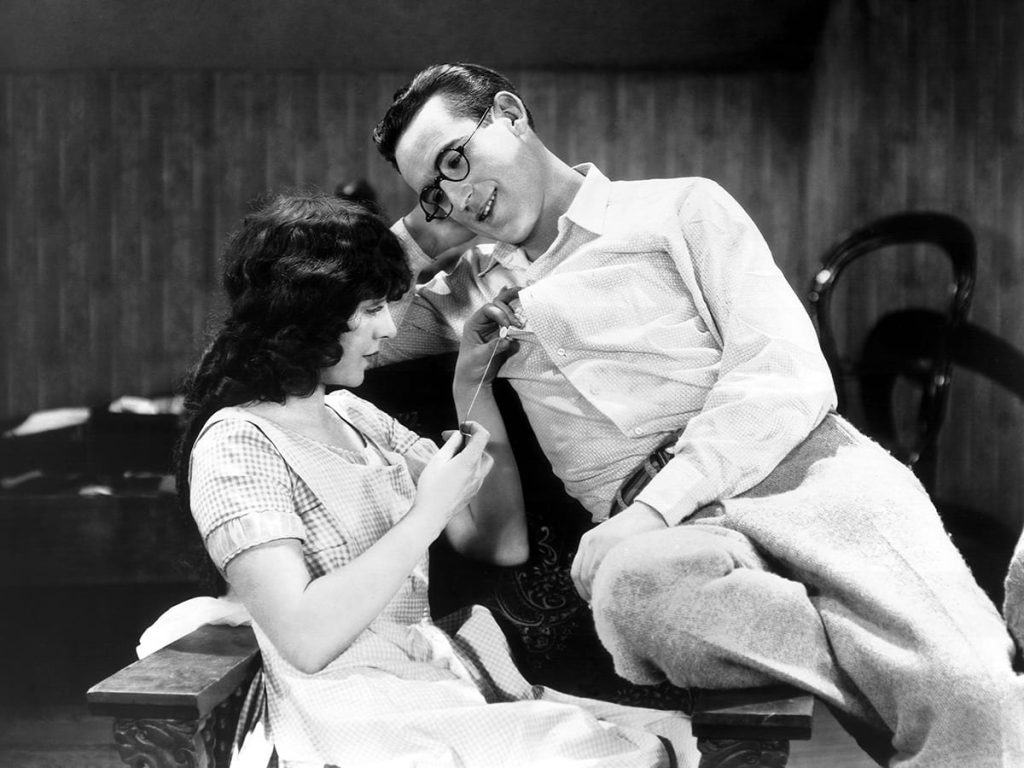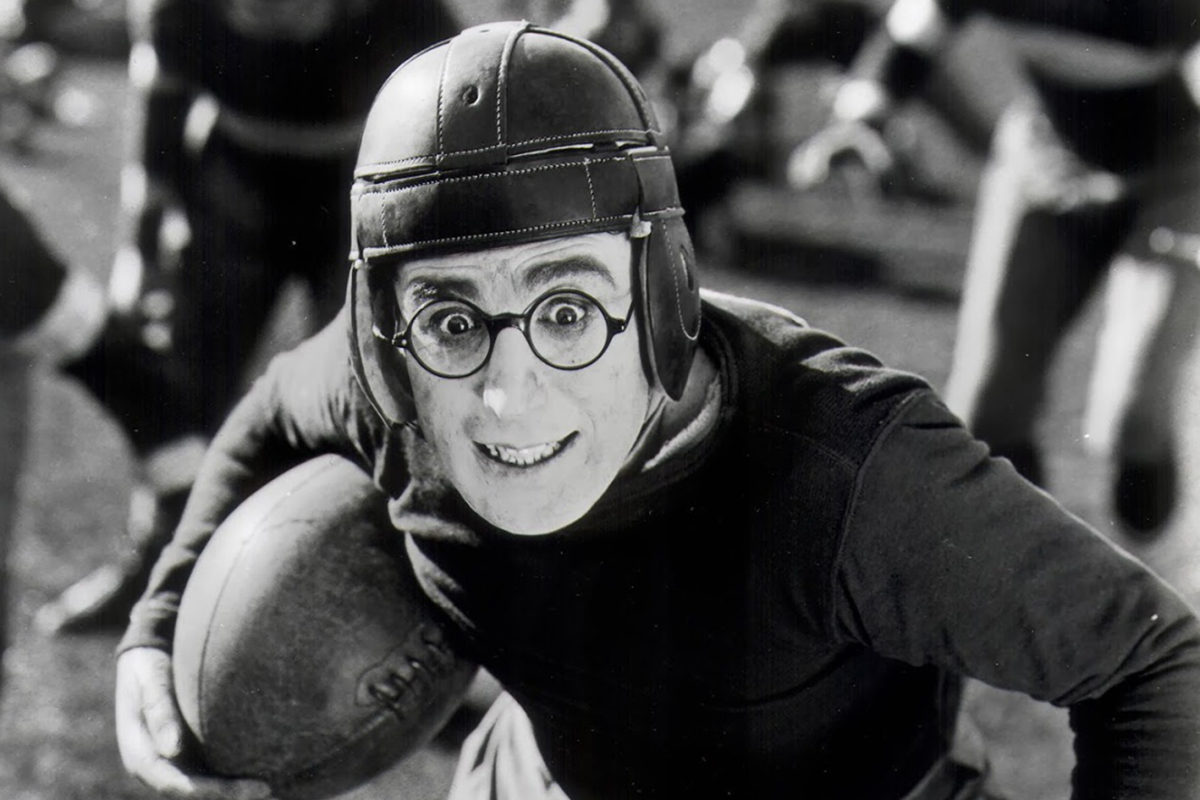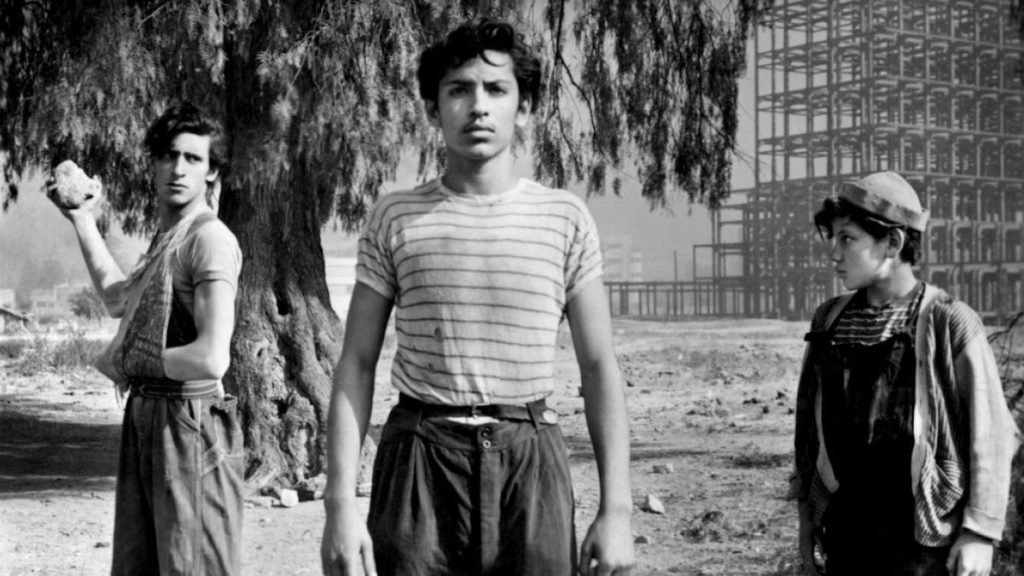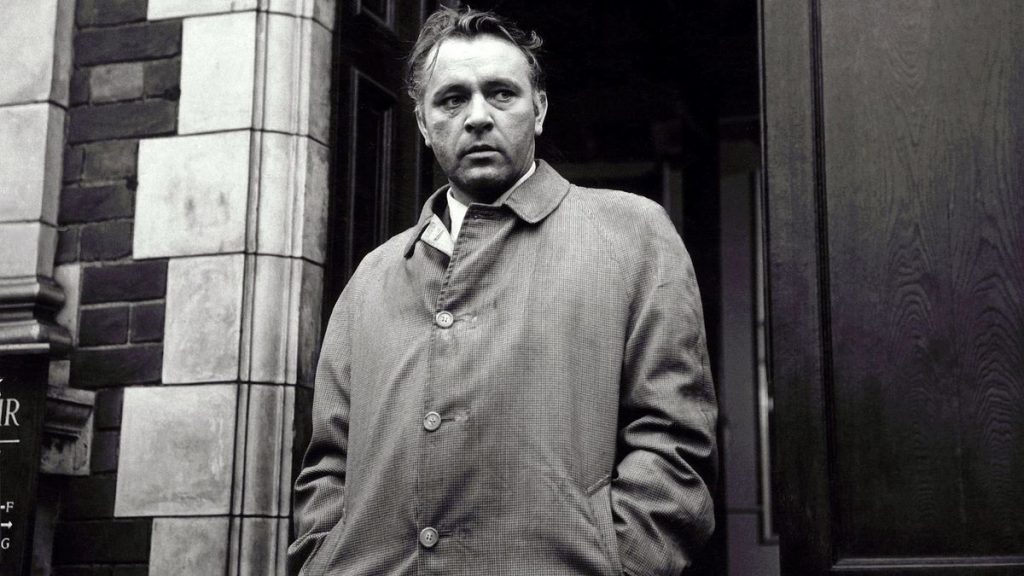There is no better time to watch Harold Lloyd’s The Freshman (1925) than when the summer air changes into a crisp autumn breeze. It’s a film about going back to school, about the thrill of athletic competition, and the idealistic nature of not just the university, but in moving to a new place—where one can reinvent oneself in an instant, and be reborn, as in this case, before cheering crowds and changing leaves.
While film historians, critics, and fans will never come to a consensus as to who sits atop the list of silent, slapstick moviemakers—it’s Chaplin or Keaton—all seem to agree that Lloyd sits at number three. Even before the auteurists swept Chaplin and, in particular, Keaton, into new levels of veneration, critics advanced the view that while Lloyd made great films, he was not a multi-hyphenate filmmaker in the way of the other two, “not a comic artist,” as CA Lejeune, still an admirer, wrote in the pages of The Guardian in 1925. “He does not shape the plot,” she observed, “the plot shapes him.”
The 100 years since, however, have been even kinder to Lloyd, especially as our understanding of “filmmaker” has evolved beyond who is listed in the credits as “director.” To watch a Lloyd film, to read about how meticulous he was in the planning and staging of his famed stunts, is to understand the fullness of his filmmaking. When the great PBS series “American Masters” released their documentary on the man in 1990, it bore the title, Harold Lloyd: The Third Genius.
Once need look no further than to Lloyd’s The Freshman, rightly hailed as a masterpiece, not only for its form and substance, but also for its influence. On the surface, the beats may sound familiar: a bespectacled kid with a dream tries to make it at school, turns out to be a bit nerdy, courts the in-crowd by playing football, and then, to the surprise of everyone, turns out to win the big game and, of course, the love of his life in the process. One sees the seeds of The Freshman’s structure in countless films, from Martin & Lewis’ That’s My Boy (1951) to An Extremely Goofy Movie (2000).
Yet it is in the final scene, in which Lloyd’s character completes a dashing run to win the big game, where the film distinguishes itself as a masterpiece on par with his clock-hanging exploits in the film generally considered his best, 1923’s Safety Last!
In 1924, according to film historian Tom Dardis, Lloyd one day announced at a staff meeting: “Let’s make a football film!” They immediately began to dream up what that final scene might look like. With Safety Last!, Lloyd and his team, which included co-directors on both films, Fred C. Newmeyer and Sam Taylor, created the famous clock sequence first. From there, they reverse engineered the film, considering ways that Lloyd’s character might have ended up in such a precarious situation.

The team attempted something similar for The Freshman. They even went out and shot footage of the crowds at the Rose Bowl in Pasadena, California, which, on January 1, 1925, featured a win by Knute Rockne’s Notre Dame Fighting Irish over Pop Warner’s Stanford team. But the idea was soon scrapped, according to Dardis. “I’ve got to know what’s going to happen before this,” Lloyd said, “ in order to catch the quality and the spirit of wanting to win this game.”
For Lloyd’s character, that motivation is simply wanting to prove himself. He has been mocked the whole film, refused a chance to play by the coach, found himself hopelessly in love with his friend, Peggy (Jobyna Ralston). But when all the other players on the team start to get hurt, he has a chance to show his stuff, to change how others perceive him, for the first time.
Lloyd’s character gives off a remarkably frantic energy. The adrenaline coursing through him from head to toe becomes palpable. At one point, Lloyd’s character rips the ball away from an opposing player and starts sprinting to the other end of the field, even though the play is over. “When you hear this whistle,” a title card says on behalf of the exasperated referee, “put that ball down!”
The final sequence is full of such wonderful gags. But it was important for Lloyd to not end the film, Dardis notes, by having his character stumble into victory. It must be won—perhaps with a little luck—on merit, or, as Lloyd put it, “with determination and pure guts.”
Years later, Lloyd’s granddaughter, Suzzanne Lloyd Hayes, told the Los Angeles Times that her grandfather loved to learn, and that he “had always wanted to go to college.” One gets the sense that not only is Lloyd living out a dream of his own, but is committed to doing so in a way that shows personal and emotional growth. The falls—the learning along the way—must come before the triumph.
The final scene comes as Lloyd makes an unlikely tackle to force a fumble near the team’s own endzone. To score, and thus win the game, Lloyd must then take the ball all the way down the field. He zigs and zags, running nearly the full 100 yards to win the game. The cinematographer, Walter Lundin, shoots Lloyd as if he were a soldier dashing through battle, the camera tracking him from above as combatants fail to take him down.
Lloyd’s grace before the camera is akin to Gene Kelly’s style of dance: athletic, powerful, mesmerizing. As men dive after him, failing to bring him down, Lloyd weaves about, jumping, and maneuvering his feet in perfect rhythm. Not a step out of place. So when he crosses the goal line, it is not just the triumph of a freshman, the freshman, but of Harold Lloyd himself.
“The Freshman” is streaming on the Criterion Channel, HBO Max, and Plex.



